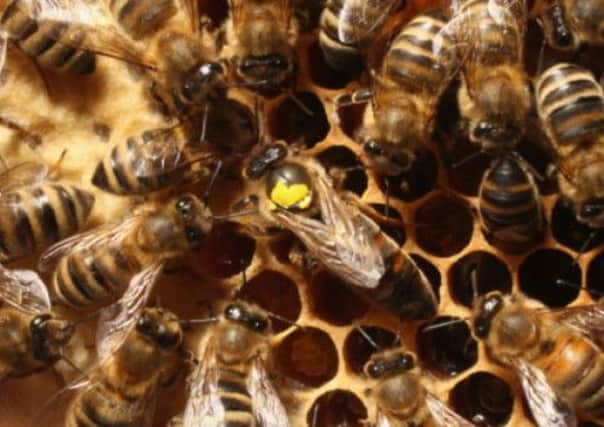Bee decline: Dandelions may help reverse losses


A prolonged cold winter followed by recent warm weather has led to a sea of the golden flowers sprouting in fields, parks, gardens and road verges across the country.
While gardeners might prefer to mow them down, beekeepers are hoping that large quantities of protein-rich dandelion pollen and nectar will help reverse an alarming decline in bee populations.
Advertisement
Hide AdAdvertisement
Hide Ad“The pollen from dandelions is a great source for bees, especially when there is nothing else around. We have suffered huge losses in numbers of bees in recent years so the more dandelions that are available, the better things are for the bees,” said a spokesman for the British Beekeepers Association. “At the moment there may not be many other sources of pollen around, so this invasion of dandelions will be a great help.”
Each dandelion plant can produce 20,000 feather-light seeds which are blown on the wind, allowing them to colonise gardens in a short period of time. They thrive in nutrient-rich soil and destroy other flowers by encroaching on their habitats, which makes them unpopular with gardeners.
But after one of the coldest springs on record, dandelion plants are more important than ever to Scotland’s decimated bee colonies.
Davie Black, the Stirling-based volunteers’ co-ordinator of the charity Plantlife, said: “Everything has been held back by a really cold spring, but the dandelions are now flourishing.
“If they get out of hand they can prove to be a bit of a nuisance. But they are a lovely bright yellow flower which are good to see early in the season.
“They do spread and have a lot of seeds, which makes them great for bees. The more wild flowers in the country the better, as they are good pollinators.
“This kind of ‘invasion’ is ideal for bees. We need more wild flowers in the countryside.”
A spokesman for Scottish Natural Heritage said: “The weather we have experienced recently has been much colder.
Advertisement
Hide AdAdvertisement
Hide Ad“Dandelions have an ability to grow quite rapidly, which may explain the boom. They are quicker off the mark than some of the plants around them.”
Bad weather was blamed for wiping out an estimated 4,000 bee colonies in Scotland earlier this year. But a Scottish Government handout of £200,000 to help beekeepers restock hives was branded a “waste of money” by environmentalists who claim that controversial pesticides are responsible for devastating bee populations.
Last month campaigners celebrated a “victory for bees” after the European Union voted for a ban on three neonicotinoids - imidacloprid, clothianidin and thiamethoxam - because of fears that they were threatening the survival of bees by damaging the insects’ ability to forage.
Dandelions benefit bees because of the amount of pollen they produce, which is collected by bees, stored in the hive and used to feed young bees.
Although they are classified as weeds, dandelions are also edible and were once cultivated for cooking and for their medicinal uses.
The dandelion gets its name from its tooth-like leaves. The English name is a corruption of the French for lion’s tooth - or dent de lion. Other names include swine snout, cankerwort, clockflower, wild endive and puff ball.
On a breezy day, a dandelion seed can be blown miles from its parent plant. The parachute part of the seed drops off when it strikes an obstacle, which is why so many grow in crevices next to walls.
The white sap from its stem was said to cure warts. Dandelion tea is supposed to help calm stomach aches.
Advertisement
Hide AdAdvertisement
Hide AdThe plant, which is rich in potassium, zinc and calcium, is also used by some herbalists to treat skin conditions, asthma, low blood pressure, poor circulation, ulcers, constipation, colds and hot flushes.
The young raw leaves can be used in salads or cooked as a vegetable. They are also used to make coffee and wine.
According to folklore, you can tell your life expectancy from blowing once on a seed head. The number of seeds left is supposed to reveal how many years you have to live.
Twitter: @AlistairMunro1
SEE ALSO: